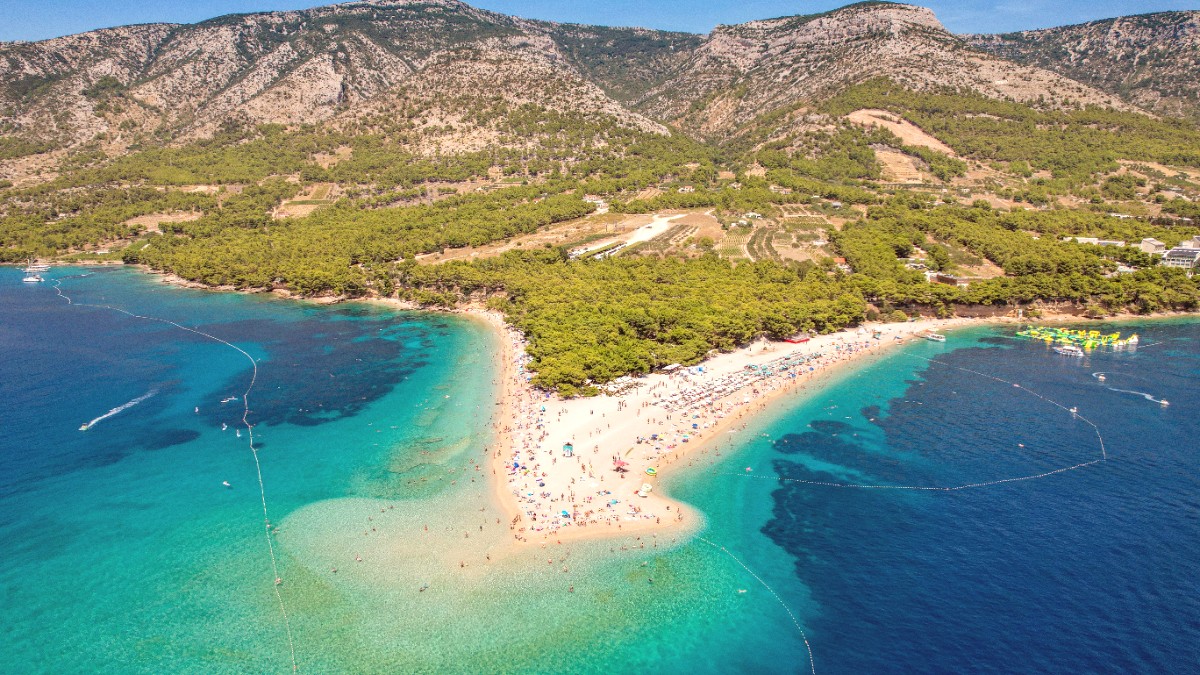
Croatia
Brac Island's cuisine is rooted in Dalmatian traditions, with strong Mediterranean influences. It emphasizes fresh, local ingredients, made simply to showcase their natural flavors.
Fresh fish and seafood are abundant, including squid, octopus, sea bream, sea bass, mussels, and clams. Olive oil, a staple, features prominently in nearly every dish.
Preparation often includes grilling ('na gradele'), baking under a 'peka' bell, or boiling. These simple methods let the quality of the ingredients stand out.
Meal times are typically lunch (1-3 PM) and dinner (7-10 PM). Reservations for popular spots are good. A service charge is usually included.
Coastal areas focus on seafood, while inland villages are known for lamb and traditional agricultural dishes. Brac is famous for its lamb and high-quality olive oil.
Meat (often lamb or octopus) and vegetables cooked slowly under a bell-shaped lid with hot embers. Incredibly tender and flavorful. Pre-order is often needed.
Found in traditional konobas, especially in inland villages.
('Janjetina s ražnja') Brac lamb is celebrated for exceptional quality. Slow-roasted on a spit, yielding succulent meat with crispy skin.
Many konobas, especially inland or along main roads, serve this iconic dish.
A classic Dalmatian beef stew: beef marinated and slow-cooked in wine and spices until tender, served with homemade potato gnocchi. This rich, savory dish takes hours to make.
A true labor of love, found in many traditional restaurants.
Burek, a flaky pastry filled with meat, cheese, or spinach, is available in bakeries ('pekara'). Ćevapi, grilled minced meat sausages, are another popular fast food item.
Local Brac wines are popular, with Plavac Mali (red) and Pošip or Malvazija (whites). Rakija, a strong fruit brandy, works as a digestif. Local mineral waters are popular.
Limited fine dining establishments exist, mostly in Bol, often within boutique hotels. These offer contemporary Croatian cuisine with refined dishes and an elevated dining experience.
The most common dining category, found across all major towns (Supetar, Bol, Milna, and Postira). These "konobas" and restaurants specialize in traditional Dalmatian dishes, fresh seafood, and grilled meats.
For budget-friendly meals, explore local bakeries ('pekara') for burek, pastries, and fresh bread. Pizzerias are widely available, giving casual and affordable dining.
International cuisine options are limited. Italian-inspired dishes like pizza and pasta are common. Some tourist areas may give general international fare.
The focus stays strongly on Croatian and Dalmatian cuisine. Embrace local flavors for the most authentic experience.
Opt for local Croatian and Dalmatian cuisine to fully experience the island's unique flavors.
Many restaurants feature freshly caught seafood daily.
Traditional tavern, often family-run, serving local, rustic dishes.
Denotes a more formal restaurant setting.
Specializing in pizza and casual fare.
Bakery for pastries, bread, and burek.
A traditional tavern, often family-run, serving local, rustic dishes in a charming setting.
This kind of eatery truly mirrors island life.
A more formal restaurant, often found in larger towns, offering a wider menu.
Great for a special evening out.
Always double-check with restaurant staff about ingredients and preparation methods. Politely explain your dietary needs to them.
For strict dietary requirements, self-catering from supermarkets, where you can buy raw ingredients, may be the best option.
Some private individuals or agritourism properties offer cooking classes, focusing on traditional Dalmatian dishes. These classes give practical skills and insights into local culinary techniques.
Visit the Olive Oil Museum in Skrip or various local producers to participate in olive oil tasting workshops. Learn about different types of olive oil and how to distinguish their flavors.
Farm visits and interactions with food producers give a direct connection to Brac's agricultural heritage. The Olive Oil Museum in Skrip offers tours.
This supports the island's unique agricultural heritage.
Seek out specific culinary routes or guided tours that focus on food production and tasting.
Discover hidden gems and local secrets.
Dining at a konoba in an inland village for a "peka" meal gives a truly authentic experience, often with pre-ordering.
Many inland establishments emphasize farm-to-table ingredients, connecting you with local agriculture.
Enjoy meals in rustic, local settings away from the coastal crowds, providing a peaceful atmosphere.
Brac's culinary experiences allow you to taste the island and also grasp the processes and traditions behind its delicious food.